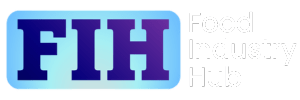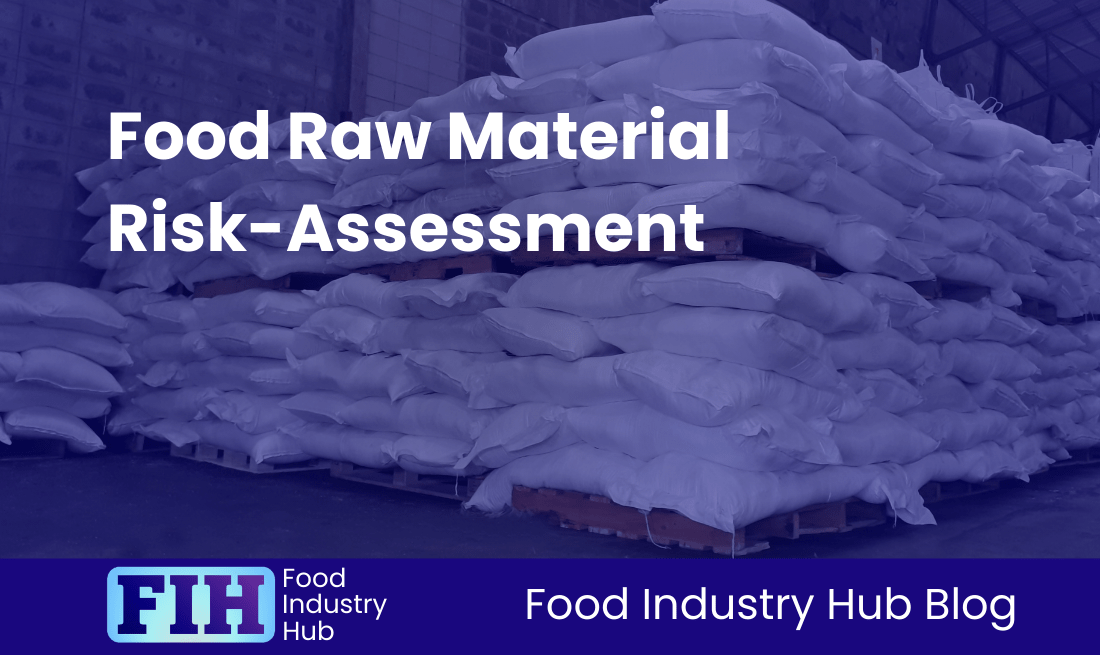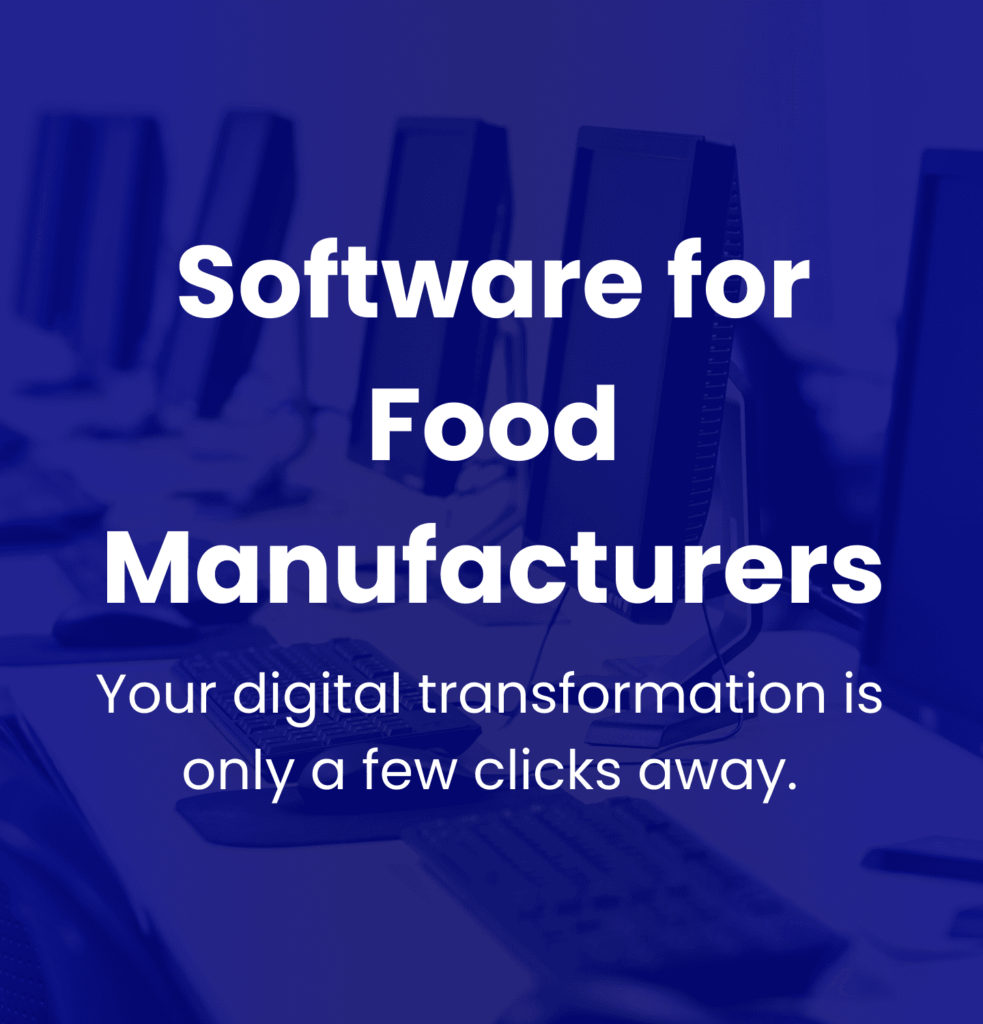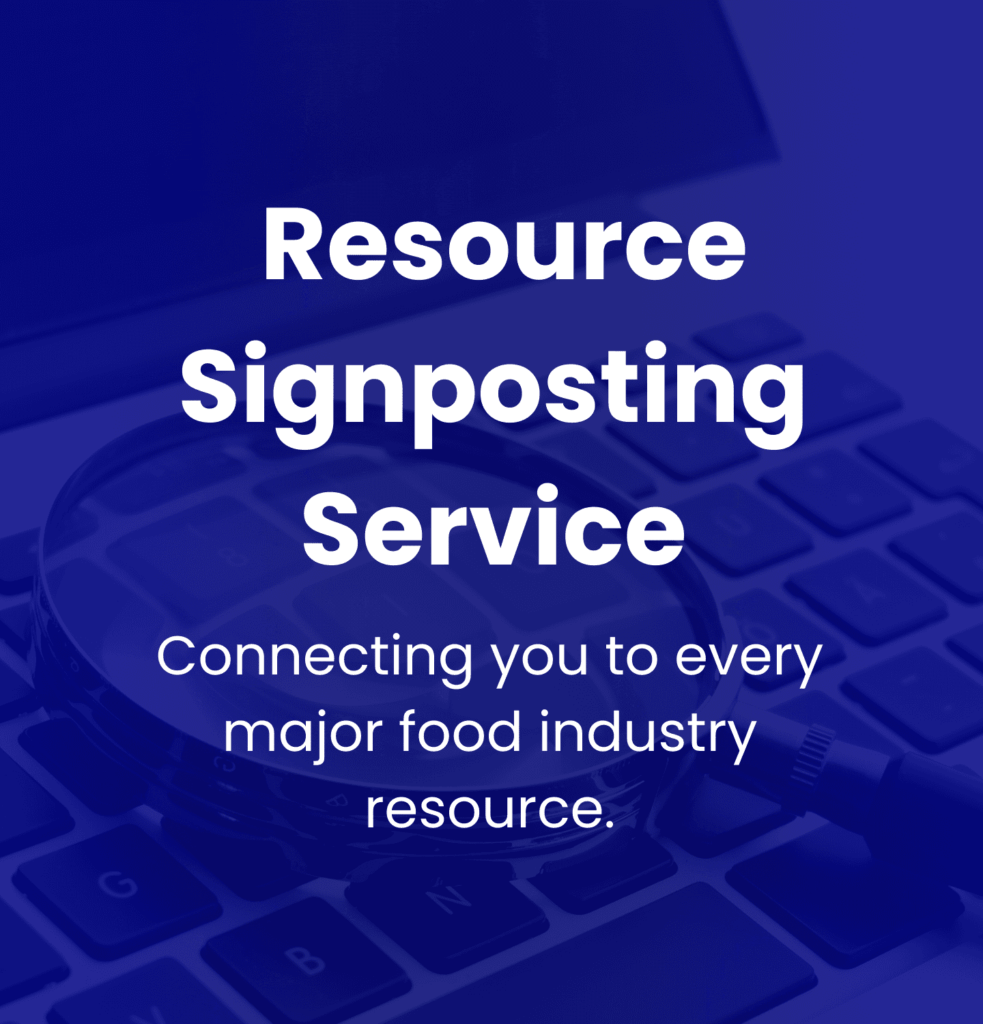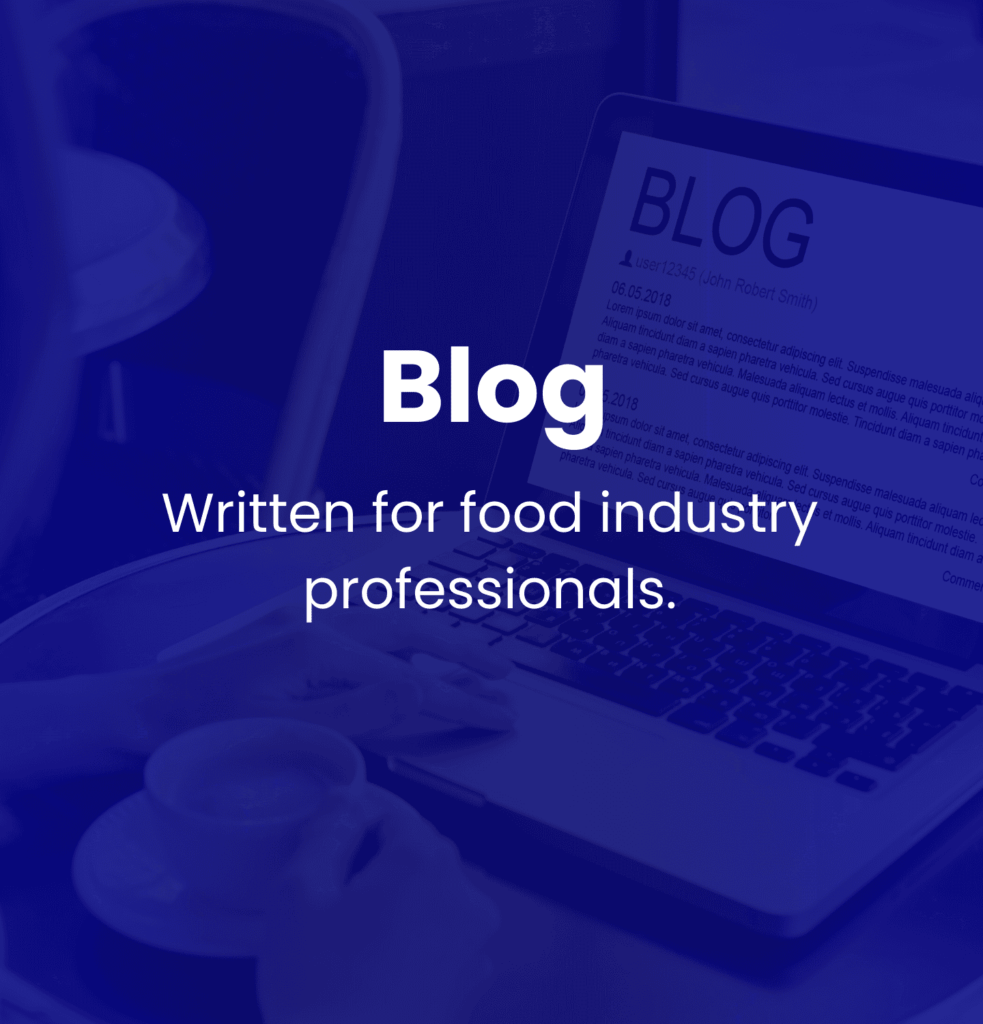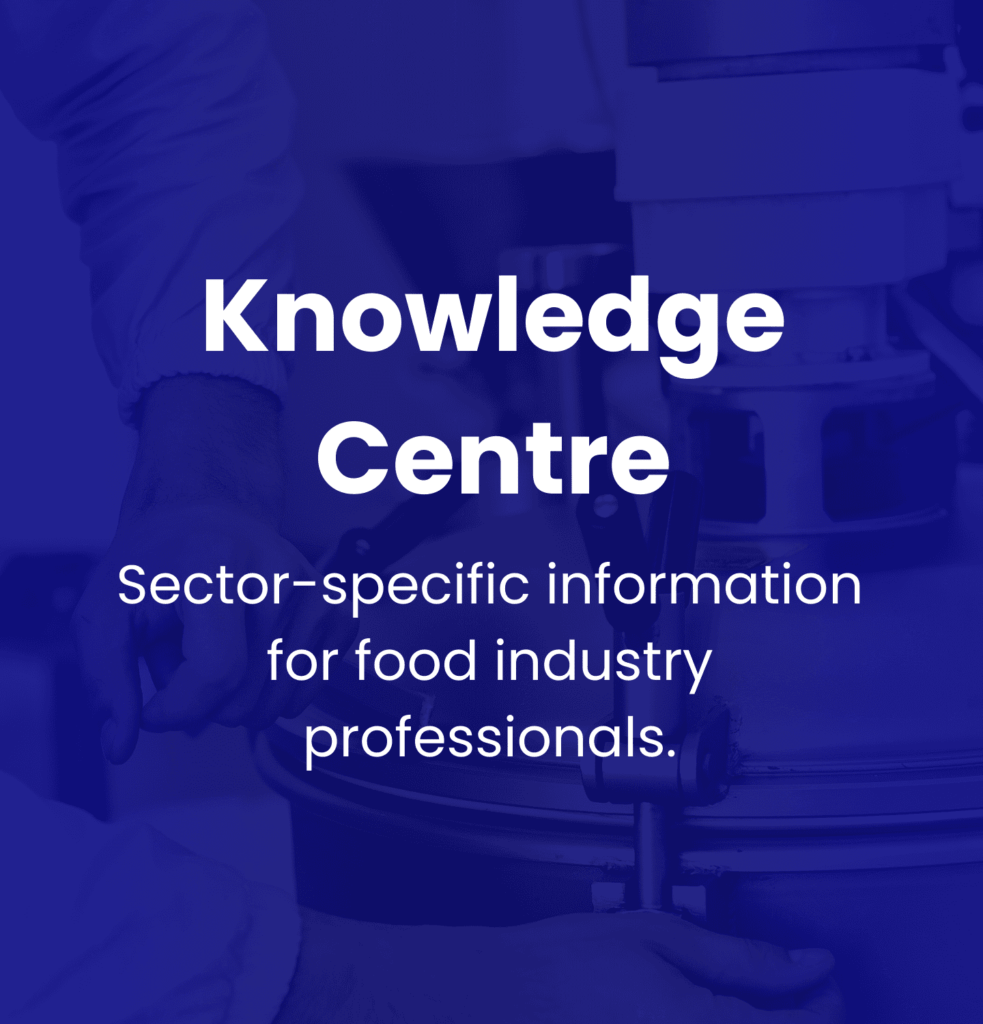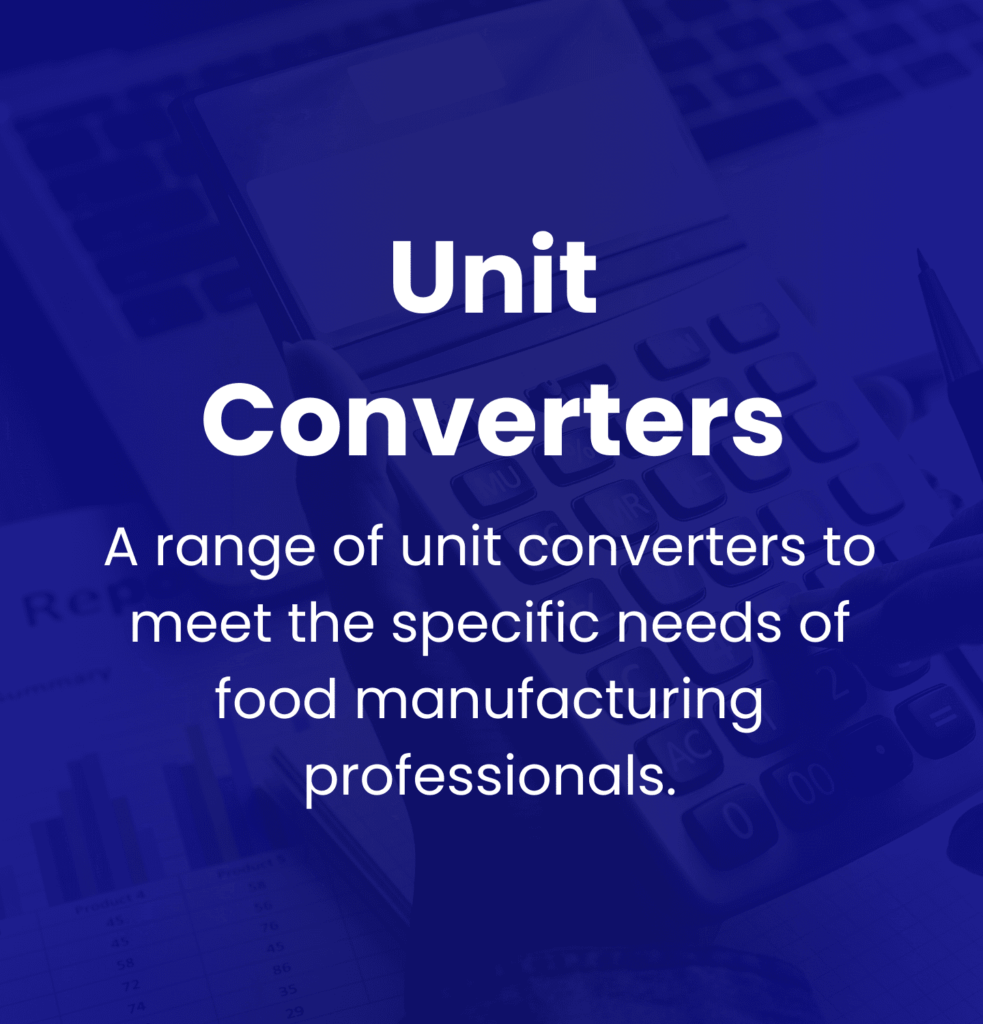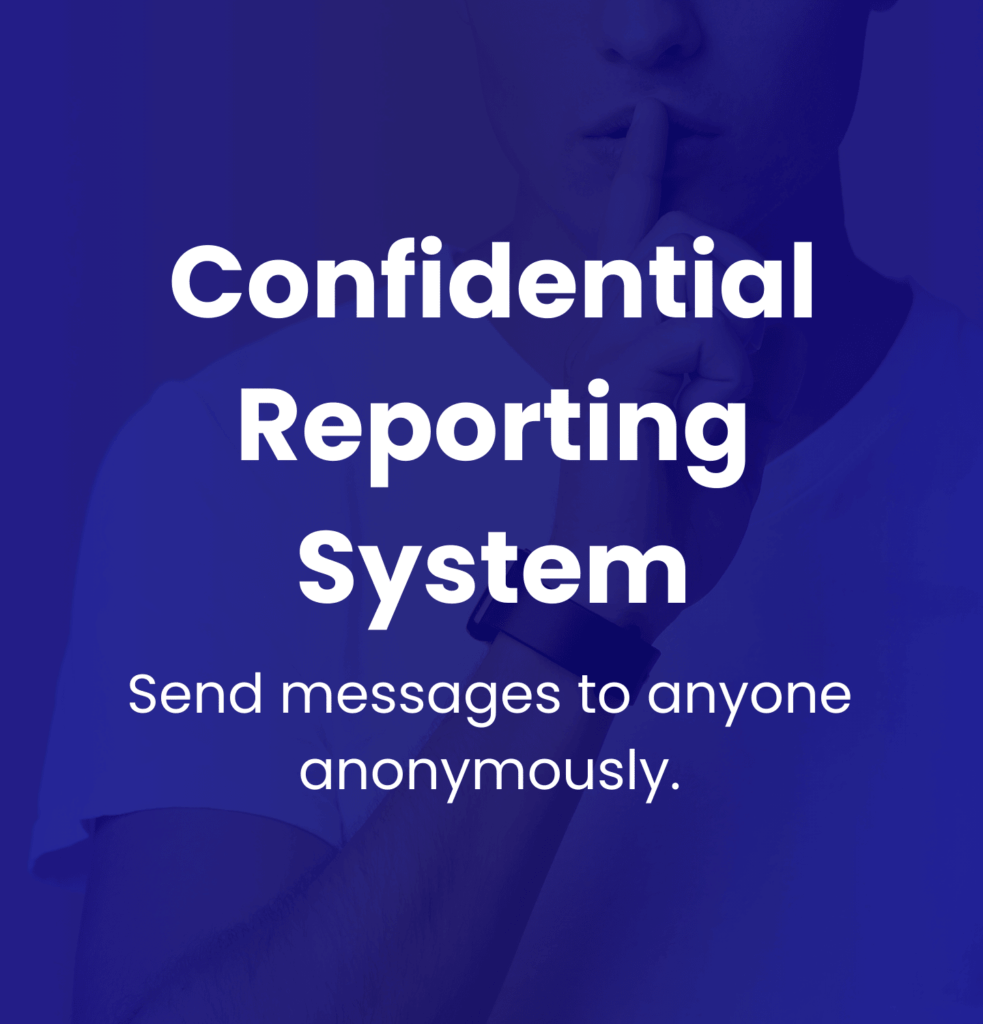Know: Allergen Management
Contents
Introduction
Key Takeaways
Identifying Common Allergens
Narrowing Down Key Food Safety Regulatory Frameworks
The Role of HACCP in Allergen Management
Mitigating Allergen Risks: Supplier and Ingredient Management
Facility Design and Production Processes
The Importance of Labeling and Consumer Communication
Creating a Food Safety Culture: Staff Training and Awareness
Emerging Technologies in Allergen Management
Analysing Cross-theme Dependencies in Allergen Management
Conclusion
Introduction
Noteworthy rises in the incidence of food allergies over recent decades have underscored the call for stricter Allergen Management practices within the food production sector. Consumers with allergies are reliant on accurate product information to make safe dietary choices, thereby making allergen detection, management and risk minimisation a top priority for manufacturers. They must focus on these areas not only to prevent potential health risks but also to meet regulatory obligations.
What Entails Allergen Management?
Allergen Management includes key activities distinctly aimed at recognising, regulating, and decreasing allergenic risks in food offerings. These activities involve meticulous control of ingredients and verification of supplier practices. The manufacturers examine ingredients for allergenic possibility and verify their supplier’s measures to prevent cross-contamination. Implementing effective prevention techniques against cross-contamination, such as thorough sanitation practices and detailed procedure changeovers, plays a pivotal role in reducing risks. Moreover, wide-ranging staff training assures all personnel understand allergen risks and how to handle them, thereby promoting a safer production environment. Routine allergen testing for products and production surfaces verifies the effectiveness of control measures, helping manufacturers to meet the regulatory standards. Insightful and precise product labelling facilitates improved consumer awareness and safety.
The Imperative for Allergen Management
The repercussions of overlooking Allergen Management could be severe, including major health risks to consumers and potentially life-threatening allergic reactions. The financial fallout might include expensive product recalls and legal liabilities, while regulatory non-compliance could lead to product withdraws from the market and reputational damage. Therefore, robust allergen control systems are essential to uphold both consumer wellbeing and the ethical standards of a corporation.
In the context of upholding food safety, product quality, and legislative standards, effective Allergen Management is central. This consists of both adherence to labelling regulations and active engagement in hazard analysis and critical control point (HACCP) programs. In high-capacity production setups, the implementation of Good Manufacturing Practices (GMP) further bolsters allergen cross-contamination prevention.
Major Themes in Allergen Management
In the subsequent sections, we will look into various major topics associated with allergen management. We’ll discuss the existing regulatory parameters that guide allergen labelling, HACCP-based control strategies for identifying and managing allergenic hazards, methods of efficiently managing suppliers and ingredients, and facility design considerations for allergen control. Additionally, the significance of accurate labelling and clear consumer communication, the necessity for proper staff training protocols, and innovative technological developments in allergen management will also be covered.
Key Takeaways
The importance of adhering to regulatory guidelines in the food manufacturing industry is intensifying, specifically considering laws like Natasha’s Law and the FDA’s FASTER Act. Natasha’s Law imposes mandatory clear allergen labeling on prepackaged meals, substantially enhancing consumer protection through heightened transparency. The FASTER Act accentuates the necessity for improved allergen safety in food, highlighting the significance of compliance in public health protection. Non-adherence can ignite severe legal consequences, underscoring the need for rigorous observance of these mandates.
Preventive Measures and Allergen Control
Proactive actions are at the forefront of successful allergen control. The Hazard Analysis and Critical Control Points (HACCP) system is indispensable for the identification and management of allergen threats during the food production process. The HACCP implementation requires detailed documentation and consistent reviews, assuring a persistent handling of risks. Also, solid supplier management workflows help confirm that raw materials comply with strict allergen control standards, thereby effectively mitigating the risk of unanticipated allergen contamination.
Facility Design and Allergen Management
The arrangement of facilities considerably influences allergen management methods. Facilities must be consciously laid out to diminish cross-contact between allergenic and non-allergenic materials. This may involve separate production zones, effective cleaning protocols, and fitting airflow systems. Accurate and comprehensive product labeling is equally necessary as it helps consumers make informed choices by providing crucial information.
Staff Training and Safety Culture
Periodic staff training lays the groundwork for a resilient food safety culture, certifying that all workers understand the significance of allergen management. Ongoing education on allergen handling, labeling procedures and communication nurtures a proactive approach to food safety. A corporate culture that gives precedence to safety boosts awareness and responsibility, aiding in the prevention of allergen-related incidents.
Emerging Technologies and Future Prospects
Advancing technologies bear immense potential for transforming allergen management systems. Innovations in digital tracking, allergen detection methods, and AI-led surveillance can significantly amplify labeling accuracy and elevate compliance with safety regulations. These advancements can simplify allergen management procedures and enable proactive risk mitigation, thereby contributing to a safer food supply chain.
By merging regulatory compliance, proactive measures, facility design considerations, effective communication, training, and technological advancements, the food manufacturing industry can more adequately handle allergen risks and protect consumer health.
Food Industry Hub Management Systems can significantly boost the effectiveness of your food safety and quality management system, leading to improved confidence and elevated quality assurance throughout your operations.
Identifying Common Allergens
Food allergies pose a significant public health risk, affecting millions of people worldwide. Identified by legislation such as the Food Allergen Labelling and Consumer Protection Act (FALCPA) and supplemented by the FASTER Act, the common allergens include milk, eggs, peanuts, soy, wheat, tree nuts, fish, shellfish, and sesame. Recognising these allergens is key because of their varying capacities to prompt severe allergic responses, which can vary from mild symptoms to dangerous anaphylaxis. [Source: Food Allergy Research & Education] [Source: American College of Allergy, Asthma & Immunology].
Overview of the Most Common Food Allergens
Food allergies result from allergenic proteins that elicit an immune response which wrongfully targets these proteins as harmful. Symptoms of allergic reactions can encompass:
- Skin reactions: Such as hives or swelling.
- Respiratory problems: Including wheezing or shortness of breath.
- Digestive symptoms: Such as nausea or abdominal pain.
- Cardiovascular issues: Including feelings of faintness or spells of dizziness.
- Anaphylaxis: A severe, life-threatening reaction that requires immediate medical attention. [Source: FDA].
Importance of Allergen Awareness in Product Formulation
Allergen awareness is fundamental in several aspects of product formulation and ingredient sourcing for the food production industry.
- Ingredient Labelling: Clear and accurate labelling is essential to alert consumers to allergens. Regulations mandate that manufacturers state major allergens explicitly, such as by indicating “Contains Milk” on product packaging.
- Supplier Management: Companies need to verify that their suppliers can ensure the safety of their ingredients pertaining to allergens. This necessitates thorough quality control measures and comprehensive ingredient disclosures.
- Production Environment: Protocols to avert cross-contamination are vital. Ideally, production facilities should establish dedicated production lines for allergenic ingredients and adopt extensive cleaning protocols.
- Consumer Education: Active consumer education about allergens is necessary for food manufacturers. Enhancing awareness about safe food handling and the importance of identifying allergens increases consumer safety.
Controlling allergens is more than a regulatory obligation; it is a key aspect of safeguarding consumers and reinforcing their trust. By placing allergen awareness at the forefront of both product formulation and ingredient sourcing, manufacturers can considerably lower health risks and bolster public confidence in their products.
Narrowing Down Key Food Safety Regulatory Frameworks
Allergen management plays a critical role in food safety, with regulators worldwide setting standards for how food businesses must deal with and label allergens. This article touches upon key regulatory frameworks including Natasha’s Law in the U.K., the implications of the Windsor Framework post-Brexit, the FDA’s FASTER Act in the U.S., and the EU’s Food Information to Consumers (FIC) regulation. These frameworks significantly shape operational directives and facility design with respect to food allergens.
Overview of Frameworks
Natasha’s Law (U.K.)
In remembrance of Natasha Ednan-Laperouse, who tragically lost her life due to improper allergen labelling, Natasha’s Law was introduced. This UK regulation requires pre-packaged foods for direct sale (PPDS) to have complete ingredient lists, with allergens clearly marked. This law, which has been applicable to all UK food businesses as of October 1, 2021, necessitates clear labelling of all ingredients with a distinct emphasis on allergens, such as bold font, on packaging for foods prepared and sold on the same premises [Source: UK Government]. This necessitates a proficient labelling system in facilities to manage and display allergen information for freshly made products [Source: Anaphylaxis Campaign].
Windsor Framework (Post-Brexit)
The Windsor Framework shapes how the UK aligns with EU food safety standards post-Brexit. While it doesn’t specifically modify allergen management, it does ensure ongoing cooperation between the UK and the EU on food safety standards, including regulations like Natasha’s Law, which could shape future EU-UK partnerships in food safety.
FDA’s FASTER Act (USA)
The Food Allergy Safety, Treatment, Education, and Research (FASTER) Act, introduced in 2021, seeks to improve food allergy research, treatment, and public awareness. Provisions include the addition of sesame as the ninth major food allergen in the USA, aiming to improve labelling and consumer education pertaining to food allergens. This law obliges food products containing sesame to be clearly labelled, resulting in changes to product labelling and consumer education strategies in the U.S. food industry Facilities will need to update labelling systems and possibly reformat products to adhere to the new allergen recognition standards.
EU Food Information to Consumers (FIC) Regulation
The FIC regulation necessitates food businesses to provide clear, comprehensive labelling of food products. It mandates the highlighting of food allergens in the ingredients list, using bold, italics, or other font variations to facilitate consumer safety. Like Natasha’s Law, it requires clear labelling of 14 major allergens, ensuring consumers are aware of potential food allergens.
Crisis Management and Facility Design
The referenced regulatory frameworks greatly impact both operational directives and facility design. Businesses need to have efficient crisis management protocols in place to address potential mismanagement of allergens, guaranteeing prompt corrections and effective communication with consumers. Additionally, facility designs should include proficient labelling systems, dedicated allergen separation areas, and clear signage to prevent cross-contamination and adhere to labelling regulations.
Sign-up for the Food Industry Hub Mail Service
We regularly produce new content for food industry professionals, and the Food Industry Hub Mail Service is the best way to stay up to date with the latest additions.
Signup today to be added to the Food Industry Hub mailing list.
The Role of HACCP in Allergen Management
The HACCP system, which stands for Hazard Analysis and Critical Control Points, plays a pivotal role in allergen management in the food manufacturing industry. It operates by underscoring a preventive approach towards identifying assessing, and controlling allergen hazards at all stages of the manufacturing process. More importantly, it helps assure that food products are safe for individuals with allergies, especially within the current context of rising food allergy prevalence.
Hazard Identification in Raw Material Intake, Processing, and Packaging
Efficient allergen management commences with hazard identification, a process that rigorously evaluates potential allergen risks during each phase of production:
- Raw Material Intake: Comprehensive ingredient reviews and supplier claim validation are important to identify any allergens that might be present in raw materials. The establishment of precise protocols for properly labelling all ingredients and segregating allergenic ones during storage is a key preventative measure against cross-contamination.
- Processing: At this stage, allergens can easily be introduced or cross-contaminated via direct handling or through shared equipment. To uphold food safety, measures such as robust cleaning protocols, scheduling to reduce allergen exposure, and assigning exclusive equipment for the production of allergenic and non-allergenic products are recommended.
- Packaging: During packaging, ensuring the accuracy of allergen labels is essential. In addition, the process of transitioning products to their final packaging and the packaging materials themselves should be evaluated rigorously for allergen risks to avert unintended consumer contact. Regular examination of packaging processes can help secure compliance and avert labeling mistakes.
Identifying Control Points (CPs and CCPs) for Allergen Management
By specifying Control Points (CPs) and Critical Control Points (CCPs) in the allergen management process, food manufacturers can put in place significant controls which can aid in reducing allergen risks:
- Cleaning Protocols: Robust cleaning protocols are a necessary deterrent against potential cross-contamination. Regular monitoring and validation of cleaning efficacy can be conducted via methods such as ATP testing, which measures surface cleanliness (but not the direct presence or absence of allergens) [Source: Allergen Bureau].
- Label Verification: Accurate label verification enables consumers to be informed of potential allergens in products. Employing automated systems can enhance the reliability in labeling by tracking allergen declarations properly and alerting production personnel to any discrepancies.
- Rework Procedures: Proper handling of reworks is necessary to avoid allergen contamination of finished products. It is important to establish standardised procedures for reworked products that could potentially be contaminated, including segregation, testing, and adequate disposal where needed.
Aside from control points and critical control points identified in the process flow, the HACCP system can also introduce allergen controls in the form of prerequisite programmes. By focusing on these identifying aspects within the HACCP framework, food manufacturers can formulate a comprehensive allergen management strategy that not only safeguards consumers but also adheres to legal requirements. Implementing these controls will enhance the overall safety and standard of food products, assuring customers that their health and well-being are given high priority.
Mitigating Allergen Risks: Supplier and Ingredient Management
In food manufacturing, achieving effective allergen management hinges largely on supplier audits and ingredient risk profiling. These factors are instrumental in reducing allergen-related risks and safeguarding consumer safety.
Supplier Audits
Auditing ingredient suppliers is a key process in verifying the compliance of these suppliers with set allergen management standards. Evaluating the measures they have in place to eliminate cross-contamination risks forms a significant part of these audits. Undertaking such reviews allow food producers to evaluate the dependability of allergen information supplied, confirming its accuracy and relevance to their allergen management strategies. This evaluation process also assists in identifying potential allergens present in raw materials, thus paving the way for preventive initiatives consistent with their operational procedures.
Besides, routine supplier audits facilitate a transparent communication process, which ensures that suppliers remain informed about moderations in allergen management requirements. This process is essential to keeping suppliers abreast of alterations in manufacturing processes or ingredient changes that might influence allergen safety.
Ingredient Risk Profiling
At the foundational level, ingredient risk profiling involves identifying and evaluating the allergenic potential of different ingredients. Part of this assessment includes creating matrices to categorise ingredients according to their allergenic properties – a vital step in streamlining risk assessment and management efforts. An understanding of regulatory requirements is also central to this process, helping manufacturers adhere to label regulations and provide accurate allergen information to consumers.
Rework Controls in Preventing Allergen Contamination
Controls on reworked products play a significant role in preventing allergen contamination by ensuring the safe handling of such goods. It necessitates segregating materials being redone from allergen-free products and using specific processes and tools to avoid cross-contamination. For allergen management effectiveness, maintaining comprehensive documentation of all reworking processes is required. This documentation includes keeping records of the allergen status of each redo, which is essential for adhering to safety protocols [Source: PMC].
It is necessary to implement clear protocols for segregating and handling redone materials, consistent with those established for raw materials and finished products. Periodic testing and validation of redone goods ensures these protocols effectively guard against allergen exposure. Implementing these measures means that manufacturers not only enhance their allergen safety strategies but also comply with all relevant regulatory standards, ultimately shielding consumers from allergenic risks.
Facility Design and Production Processes
Dedicated Storage Areas for Allergenic and Non-Allergenic Ingredients
Dedicated storage spaces for allergenic and non-allergenic ingredients are fundamental in prohibiting cross-contamination. Unintentional mingling of allergenic components with non-allergenic products can induce serious allergic reactions; hence, suitable storage practices become essential.
An efficacious tactic is the establishment of distinctly segregated areas for allergenic ingredients. This may embody separate rooms, shelves, or bins, which are overtly distinguished for allergenic materials. Utilising a colour code system and visible labelling can significantly aid this demarcation, enabling staff to promptly and accurately identify the storage areas [Source: Food Standards Scotland].
If cohabitation on the same racking system is unavoidable, allergenic materials should preferably be placed on lower shelves. This reduces the likelihood of cross-contamination ensuing from spills and assists in managing any inadvertent dislodgement of allergenic substances [Source: FDA].
Furthermore, a knowledgeable workforce that can differentiate and handle allergenic versus non-allergenic ingredients plays a key role in an effective allergen management strategy. Ongoing audits and reinforcement of the proper storage protocols can further lessen potential risks linked to allergenic ingredients
[Source: Virginia Department of Agriculture and Consumer Services].
Preventive Measures: Dry Cleaning and Closed Systems
Preventive measures play a significant role in mitigating the risk of allergen cross-contamination within production processes. Two effective approaches include dry cleaning methods and the use of closed systems.
Dry cleaning practices are oriented towards minimising allergen exposure during the cleaning operations. Traditional wet cleaning holds its merits, but when dealing with powdery substances like flour, dry cleaning techniques such as vacuuming and sweeping can offer more benefits. These procedures aid in confining allergenic particles and preventing them from becoming airborne. Employing dedicated cleaning tools for various allergenic products is advised to prevent cross-contamination during the cleaning process
[Source: FAO/WHO Codex Alimentarius].
Closed systems represent another preventive measure that can significantly enhance allergen control in production environments. Employing such systems reduces the chance of airborne allergens contaminating allergen-free products. These systems often include sealed containers and carefully planned airflow controls that foster positive pressure surroundings, effectively blocking allergens from entering.
Facilities designed with conscious thought towards dedicated storage areas and preventive measures like dry cleaning and closed systems are fundamental for diminishing the risks of allergen cross-contamination. Embracing these strategies not only safeguards consumers but also helps to maintain industry standards within food manufacturing for safety and quality.
The Importance of Labeling and Consumer Communication
Labeling and consumer communication are instrumental in managing allergens. Their main purposes are to prevent unexpected exposure and to ensure food products are safely consumed.
Compliance with EU FIC and Other Labeling Regulations
The EU Food Information to Consumers (FIC) Regulation requires definitive labeling of allergenic ingredients in food products. EU Regulation 1169/2011, for instance, stresses that allergens should be spotlighted in the ingredient list. However, the regulation allows some flexibility in how this information is presented, which can lead to inconsistencies among manufacturers. The lack of standardised guidelines for the use of precautionary allergen labeling (PAL) statements or icons results in different labeling formats across products and regions [Source: Food Industry Executive].
The challenges of adhering to regulations are still substantial. A lack of uniformity in labeling practices can disrupt consumers’ ability to correctly identify allergens. Also, the current mechanisms for monitoring compliance within the EU may not be fully optimised, leading to varying levels of enforcement and possibly misleading labels [Source: ECA Publications].
Benefits of Digital Allergy Menus
In the food service sector, digital menus have proved to be a valuable asset in allergen management, offering several benefits that increase consumer safety and facilitate informed decisions. One such advantage is the easy access to the latest information. Consumers can quickly check for allergens at restaurants or shops by using mobile platforms or QR codes, thus making informed choices without delay [Source: PubMed].
Additionally, digital menus allow for personalisation by permitting users to input their specific allergies, leading to personalised alerts and recommendations. This level of personalisation gives consumers, particularly those with severe allergies, a sense of assurance. This is due to the clear and immediate information they receive, which reduces the risk of accidental exposure.
Challenges of Global Harmonisation in Allergen Labeling
Despite the clear benefits of improved labeling and consumer communication, attaining global harmonisation in allergen labeling is fraught with challenges. Varying regulations and guidelines in different countries complicate international trade and consumer understanding [Source: Food Standards Agency].
Consumer preferences also vary between regions, with certain formats for presenting allergen information being more effective depending on local expectations. This variation makes it challenging to establish a universally acceptable labeling format. Moreover, incorporating technological solutions, such as QR codes, requires substantial infrastructure and coordination – this adds to the hurdles standing in the way of standardising allergen information globally.
Creating a Food Safety Culture: Staff Training and Awareness
The Role of Specific Training in Allergen Management
Training that is tailored to specific roles is an integral part of managing allergens. Armed with this training, every member of staff can fully comprehend their duties concerning allergen identification, handling, and prevention. A focused approach like this minimises the chance of cross-contamination and prioritises consumer safety.
Effective training commences with comprehensive programmes designed with the individual roles of staff members in mind. Take for instance, production staff need detailed training on how to identify allergens, handle ingredients, and label correctly to minimise contamination risks. To remain informed about the latest procedures and updates in allergen management, all staff should receive regular refresher training. This helps uphold high safety standards throughout the organisation.
Success of Visitor Controls
Setting up strict visitor controls is integral to maintaining a food-safe environment, especially in food manufacturing domains where exposure to allergens can pose considerable risks. These protocols prevent unauthorised entry to production regions, significantly decreasing the likelihood of allergen contamination.
Visitor controls entail limiting access to high-risk areas and enlightening visitors about the significance of complying with allergen safety procedures. By making sure that visitors understand and follow the protocols, including limiting the introduction of personal foods, organisations can safeguard their production regions and uphold adherence to food safety practices.
Adherence to PPE Protocols
Unwavering commitment to Personal Protective Equipment (PPE) protocols is a core aspect of allergen management. Appropriate use of PPE—such as gloves and overalls—creates a barrier that assists in preventing cross-contact with allergenic ingredients, thus enhancing food safety across the operation.
Routine training on PPE utilisation highlights its significance and ensures all staff are trained to handle allergenic products correctly. A robust commitment to complying with these protocols not only aids in upholding hygiene standards but also minimises the chance of human error leading to allergen-linked incidents [Source: Allergen Bureau].
By weaving role-specific training, allergen awareness drills, visitor controls, and adherence to PPE protocols into the daily routines of food businesses, we enable a culture geared towards safety and diligence. Accentuating these key components assists organisations in effectively reducing allergenic threats, while demonstrating their commitment to consumer welfare and regulatory compliance.
Emerging Technologies in Allergen Management
With the advent of pioneering technologies, allergen management within the food industry is undergoing significant advancement. New technological innovations are enhancing safety procedures as well as improving allergen detection and traceability. This piece will explore recent advances such as hypoallergenization methods, the use of artificial intelligence (AI) in allergen management, blockchain-powered traceability, and the role of airborne allergen sensors in mitigating risks.
Hypoallergenization Methods
In the context of allergen management, hypoallergenization involves either altering the structure of allergenic proteins or implementing techniques that minimise their potential to trigger allergic reactions. This can be achieved through genetic modifications or enzymatic treatments that modify protein structure. While comprehensive data on the use of these techniques in allergen management is limited, the possible creation of safer food products remains a key area of research and innovation.
AI in Allergen Management
The integration of AI into allergen management systems has markedly improved detection and control capabilities. AI-based applications can analyse and predict the presence of allergens by processing large datasets. Methods like Fourier Transform Infrared (FTIR) spectroscopy and Hyperspectral Imaging (HSI) are gaining widespread use as they facilitate non-destructive, real-time allergen detection during production. This not only enhances food safety procedures but also mitigates the risk of allergen cross-contamination throughout the manufacturing process.
Blockchain Traceability
Blockchain technology may be a transformative tool for improving traceability in the food supply chain by providing a decentralised, transparent record of transactions. It can trace the origin and subsequent journey of allergenic ingredients during the production process. If contamination occurs, this technology enables quick identification and recall of affected products, hence reducing risks to consumer safety. The use of blockchain in allergen management is still in its nascent stage, but its traceability ability underscores its potential for further risk management.
Airborne Allergen Sensors
Airborne allergen sensors are important tools for monitoring allergens within food processing facilities as they detect allergenic particles in real-time. This allows for immediate action in mitigating allergen exposure risks. While in-depth study into the specifics of these technologies is ongoing, the facilitation of real-time allergen monitoring significantly contributes to a safer food production environment.
Technological progress in areas such as AI and non-destructive testing methods represent a marked leap forward in allergen management, bolstering both food safety and quality. As these technologies continue to evolve, they offer increased potential for safeguarding consumers against allergenic risks in the food supply chain.
Analysing Cross-theme Dependencies in Allergen Management
Successfully managing allergens within food manufacturing is a composite challenge. It necessitates an integrated approach, linking supplier management, production schedules and advanced detection technologies. When harmonised, these factors form a vital cornerstone in the moderation of allergen risks and assure compliance with regulatory standards.
Supplier Management
The role of supplier management is significant in diminishing allergen risks. It initiates with comprehensive assessments for potential allergenic ingredients. This requires not only the establishment of solid communication lines with suppliers but also ensuring they understand allergen management protocols. These protocols include the upkeep of current documentation about allergen status in their products. Frequent auditing of suppliers helps confirm compliance with allergen control measures, thus forging transparency in the supply chain [Source: Quality Assurance Magazine].
Production Scheduling
The impact of production scheduling on allergen management is immense as it aids in preventing cross-contact. A strategic plan where non-allergenic products are produced before allergen-containing ones, in combination with rigorous cleaning between runs, significantly reduces the risk of cross-contamination. Time-based separation augments allergen control practices which can be further strengthened by designating specific production lines for high-risk allergens.
Advanced Detection Technologies
Incorporating advanced detection technologies into allergen management processes enhances the ability to identify and control allergens effectively. Using allergen-specific testing verifies cleaning procedures and ensures equipment is free from residues. Simultaneously, digital tracking systems offer superior ingredient traceability throughout the supply chain, allowing for swift response times when faced with allergen-related issues.
Labelling Practices and Regulatory Accuracy
Accurate labelling is a vital component of allergen management, as it directly impacts consumer safety and compliance with regulations. All food products must include clear allergen information to prevent health risks and stay within the guidelines of laws such as Natasha’s Law. Remaining compliant demands systematic recording and frequent updates of allergen information to avoid recalls and ensuing legal liabilities.
Training Efficacy and HACCP Compliance
The effectiveness of allergen management greatly depends on the efficiency of staff training and adherence to HACCP protocols. Regular training guarantees employees are aware of allergen risks and understand the necessity of complying with management procedures. Employing HACCP systems permits continuous observation and control of allergen risks, integrating frequent evaluations and process validations to maintain high safety standards [Source: Manchester Food Research].
Insightful Correlations
The synergy between supplier management, production scheduling, advanced detection technologies, labelling practices and training commends an integrative approach to effective allergen management. This all-encompassing structure serves to guard against allergenic cross-contact while assuring compliance with regulatory prerequisites and prioritising consumer safety. Identifying and capitalising on these dependencies can significantly improve allergen management strategies among professionals in food manufacturing.
Conclusion
Allergen management in food manufacturing is intricate and multifaceted, encompassing various key factors to ensure consumer safety and regulatory alignment. A comprehensive approach should be adapted to allergen management that brings together regulatory compliance, Hazard Analysis and Critical Control Points (HACCP) systems, precise labelling, and thorough staff training.
Regulatory Compliance
The importance of regulatory compliance can’t be exaggerated. Regions worldwide have specific regulations for allergen labelling, such as the EU’s need to list fourteen allergens and the U.S. attention towards the “Big Eight” allergens—milk, eggs, fish, shellfish, peanuts, tree nuts, wheat, and soy. Compliance with these regulations is essential not only for consumer safety but also for maintaining legal standing and avoiding recalls due to undeclared allergens.
Hazard Analysis and Critical Control Points (HACCP)
A robust HACCP system is a requirement for identifying and managing allergen risks effectively in the manufacturing process. This involves comprehensive risk assessments of raw materials, processing steps, and completed products to prevent allergen cross-contact. A well-structured HACCP framework ensures that every aspect of the production chain meets food safety standards.
Accurate Labelling
Precise labelling is a major factor in protecting consumers with food allergies. Every allergenic ingredient should be clearly declared on product packaging, including potential cross-contact risks during production. These measures not only align with regulations but also empower consumers to make informed choices.
Staff Training
Thorough staff training is a cornerstone in maintaining an efficient allergen management system. It’s vital for employees to be aware of allergen-associated risks, correct handling procedures, and the importance of precise labelling. Regular training refreshers ensure that all staff are ready to minimise errors and promote a culture of food safety [Source: Codex Alimentarius].
Emerging Technologies & Global Best Practices
The emergence of innovative technologies provides an opportunity to enhance allergen management practices. Advancements like real-time allergen testing and automated labeling systems can considerably diminish human error and improve compliance, while participation in globally recognised best practices, such as the VITAL program, can help harmonise allergen management across different markets [Source: Allergen Bureau].
In summary, an effective allergen management strategy in food manufacturing requires the integration of regulatory compliance, HACCP systems, accurate labelling, and comprehensive training. By embracing emerging technologies and sticking to best practices, food manufacturers can augment their allergen management efforts, ensuring safer products for their consumers and maintaining compliance within the ever-evolving regulatory landscape.
About The Food Industry Hub Knowledge Centre
The Food Industry Hub knowledge centre delivers informative content on a variety of topics pertinent to the food manufacturing industry.
You can return to all topics by clicking here.
From The Food Industry Hub Signposting Service
Additional resources from The Food Industry Hub Signposting Service.
From The Food Industry Hub Blog
Expanding on this topic with related content from our blog.
